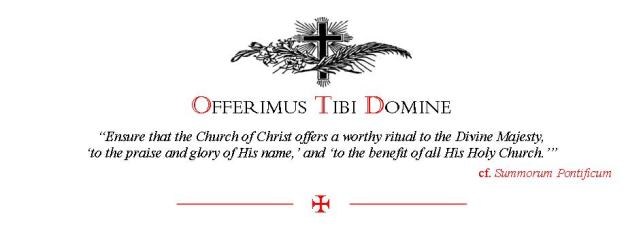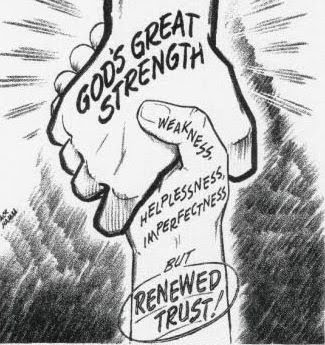 Joseph Pearce has kindly given permission for me to reproduce his introduction to John Beaumont's new book "Roads to Rome". Joseph has written books on many literary topics and authors including Tolkien, Shakespeare, Belloc, Chesterton, Oscar Wilde and C. S. Lewis. Here it is with a link to the excellent St Austin Review - StAR - which Joseph edits. www.staustinreview.com/star/contributors
Joseph Pearce has kindly given permission for me to reproduce his introduction to John Beaumont's new book "Roads to Rome". Joseph has written books on many literary topics and authors including Tolkien, Shakespeare, Belloc, Chesterton, Oscar Wilde and C. S. Lewis. Here it is with a link to the excellent St Austin Review - StAR - which Joseph edits. www.staustinreview.com/star/contributors
ROADS TO ROME
INTRODUCTION
by Joseph Pearce
One of the biggest problems afflicting modern England is her lack of knowledge of herself. Due to what Hilaire Belloc called the “ignorant wickedness” of the “tom-fool Protestant history”[1] with which she has blinded herself, England gropes and flails in the darkness of her self-constructed materialist dungeon. She finds herself in this sorry position because she has lost sight of who she truly is. And she has lost sight of who she truly is because she has forgotten who she truly was. Her problem is one of amnesia.
For more than a thousand years, from her Roman infancy as Albion, and her first martyr, St. Alban, through to the treachery of Henry VIII and his cohorts, England was inseparably united with Christ and His Catholic Church. In her anglo-saxon youth she gave us sublime poetry, such as Beowulf and “The Dream of the Rood”, and a holy host of saints too numerous to mention, whose names emblazon the countless churches dedicated to them which are strewn like manna across her landscape.
In the eleventh century, England was ruled by St Edward the Confessor, a veritable paragon of Christian kingship, and it was during his reign, in 1061, that the Blessed Virgin appeared to a noblewoman at Walsingham in Norfolk, an apparition that is the crowning moment in all of England’s history and the greatest blessing that she has ever received. The heavenly apparition and the reign of the saintly king served as the pyrotechnic climax to anglo-saxondom, a super nova that burned at its brightest as it passed away. Five years after the apparition and in the same year as Edward’s death, England was conquered by the Normans, heralding the setting of the sun on England’s anglo-saxon ascendency.
For some, such as J.R.R. Tolkien, the Norman Conquest was an unmitigated disaster that destroyed something beautiful and irreplaceable; for others, such as Hilaire Belloc, the Conquest was a glorious rebirth that enabled England to grow into the fullness of her mediaeval splendour. Either way, England was as Catholic and as devoted to her faith after the Conquest as she had been before it. England became known as Our Lady’s Dowry, and Walsingham became one of the principal pilgrimage sites of the whole of Christendom.
Nothing, it seemed, could rip England away from her faith, a faith that had refined and defined her.
Then came the so-called English Reformation, a Machiavellian revolution that robbed England and her people of their Christian birthright. Unlike the Protestant Reformation in Europe, the so-called “Reformation” in England had nothing to do with the difference between Catholicism and Protestantism and everything to do with the cynical determination of Henry VIII to have his own wicked way. And unlike the Reformation in Europe, there was little popular support for anti-Catholic “reform”. The people did not want the new “church” that Henry had forced upon them and resented its oppression and its suppression of the Old Faith. In defiance of the king and his henchmen, England remained Catholic in spirit, even if not in its forbidden practice. It took 150 years of brutal and merciless persecution, including the martyrdom of hundreds of faithful Catholics, to browbeat the English into final submission.
And yet it is said that the blood of the martyrs is the seed of the Church and this is as true of England as it was of the Church of the Roman catacombs. In the resistance of the saints is the resurrection of the sinner. And this is where the present volume comes in.
Documenting those who have taken the “roads to Rome” in the years since the Reformation, the present volume encompasses converts from Scotland, Wales and Ireland, as well as those from England. This is as it must be, and should be, because England’s destiny became entangled with those of her British neighbours in the wake of the Reformation (for better or worse). The Crown of Ireland Act of 1542 made the Kings of England (Henry VIII and his successors), Kings of Ireland also. In 1603, the accession of James I of England (James VI of Scotland) united the thrones of England and Scotland, thereby forming the United Kingdom of England, Scotland and Ireland, symbolized in the adoption of the crosses of St. George, St. Andrew and St. Patrick as the composite parts of the Union Flag (or Union Jack as it is now more commonly known). Wales is not represented on the nation’s flag, indicative of the contemptuous way in which England annexed her diminutive western neighbour, an injustice that the Welsh nationalist convert, Saunders Lewis, lamented with acerbic eloquence.
For almost five hundred years countless Englishmen and their fellow Britons have rediscovered the Faith of their Fathers, converting to Catholicism and thereby entering into communion with their nation’s past and its true being. Here we should stress that “true being” is about being true to England’s God-given inheritance. The present volume is a priceless testament to those many converts who have kept the flame of faith burning through the centuries. There are the most famous of the Victorians, such as Newman, Patmore, Hopkins, Johnson, Dowson and Wilde, and the most celebrated of the last century’s converts, such as Chesterton, Baring, Knox, Noyes, Waugh, Greene, Guinness, Sitwell and Sassoon. And yet the most famous are only the tip of an illustrious iceberg that has been hidden beneath the surface of the ocean of literature on Britain’s recent Catholic history. This diving and delving beneath and beyond the surface is the chief strength and value of this particular volume. Here we see, meticulously assembled, a far more comprehensive list of British converts to Rome than has ever been published before. For this reason alone, Roads to Rome deserves a place on the shelves of every British Catholic, and indeed on the shelves of every Catholic in the English-speaking world. It serves as an inspiration and an aide mémoire, reminding us of who we truly are, as Catholics and as Englishmen, Scotsmen, Irishmen or Welshmen. And lest we forget, these roads to Rome do not leave the British Isles to follow a foreign path to a foreign religion. On the contrary, these roads to Rome go straight through the heart of every man to the Home that every man’s heart desires.
Let’s end as we began with the words of Hilaire Belloc, a cradle Catholic whose mother, née Parkes, is one of the converts featured herein:
The Faith, the Catholic Church, is discovered, is recognized, triumphantly enters reality like a landfall at sea which at first was thought a cloud. The nearer it is seen, the more is it real, the less imaginary: the more direct and external its voice, the more indubitable its representative character, its ‘persona’, its voice. The metaphor is not that men fall in love with it: the metaphor is that they discover home. ‘This was what I sought. This was my need.’ It is the very mould of the mind, the matrix to which corresponds in every outline the outcast and unprotected contours of the soul. It is Verlaine’s ‘Oh! Rome – oh! Mere!” And that not only to those who had it in childhood and have returned, but much more – and what a proof! – to those who come upon it from over the hills of life and say to themselves ‘Here is the town.’[2]
Joseph Pearce
Writer in Residence and Associate Professor of Literature, Ave Maria University, Florida
Author of Literary Converts and biographies of Chesterton, Tolkien, Wilde and C. S. Lewis.
[1] Hilaire Belloc to Hoffman Nickerson, 13 September 1923, Belloc Collection, Boston College; quoted in Joseph Pearce, Old Thunder: A Life of Hilaire Belloc, San Francisco: Ignatius Press, 2002, p.230
[2] Hilaire Belloc to E. S. P. Haynes, November 8, 1923; quoted in Robert Speaight, The Life of Hilaire Belloc, Freeport, New York: Books for Libraries Press, 1970, p. 377. This particular letter was also quoted by Siegfried Sassoon in a letter to a friend on 29 March 1960, in which he ascribed it erroneously as being written by Belloc to Katherine Asquith. Sassoon, one of the converts documented in the present volume, selected this self-same letter by Belloc as the epigraph to The Path to Peace: Selected Poems by Siegfried Sassoon, Worcester: Stanbrook Abbey Press, 1960 and it was also subsequently reproduced in D. Felicitas Corrigan (ed.), Siegfried Sassoon: Poet’s Pilgrimage, London: Victor Gollancz, 1973, pp. 181-2.

































